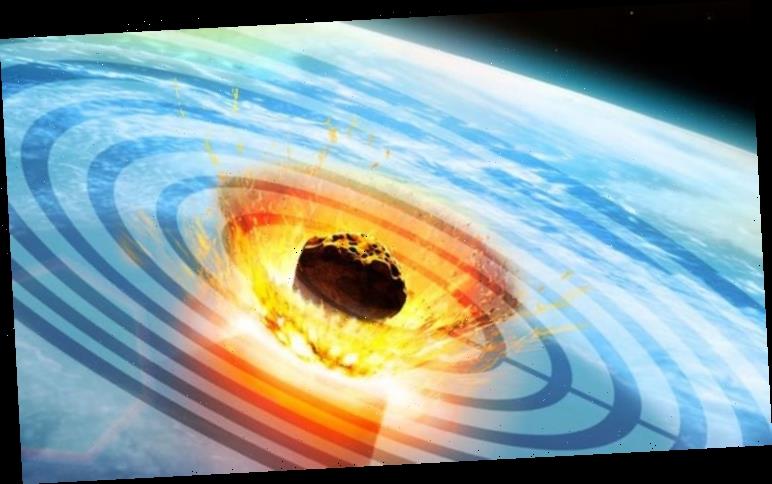Plate tectonics have played a vital role in the geological evolution of Earth. This geological activity is now thought likely to have played an important role in the evolution of life – and could even be essential for a planet’s habitability.
For this reason, scientists have long sought to determine how and when Earth’s surface changed from molten, viscous rock to a solid crust that is constantly resurfacing.
Increasingly, we’re seeing the effect of solar system dynamics on how the Earth behaves
Professor Craig O’Neill
Despite the best efforts of Earth scientists, this remains one of the biggest unanswered questions about our planet.
Professor Craig O’Neill from Macquarie University believes an asteroid impact in the Archaea could have actually started tectonics on Earth.
He told Express.co.uk: “We tend to think of the Earth as an isolated system, where only internal processes matter. Increasingly, though, we’re seeing the effect of solar system dynamics on how the Earth behaves.”
“The best analogue for what occurs when a large asteroid hits is an atomic bomb.
“But anything on a scale of the Archaean event three million years ago far exceeds any A bomb.
“At the point of impact, enormous shockwaves form and that has a coupe of effects.
“It excavates an enormous bowl-shaped crater underneath, but also the energy of it melts and vaporises an enormous amount of rock around it, which expands in an enormous explosion.
“Most of this gets immediately thrown up and out into the stratosphere, where it forms an almost global layer of little molten rock.
“The crater, which can be anywhere upwards of a few hundred kilometres at that point is unstable.
DON’T MISS
TESS satellite presents stunning new southern sky mosaic [VIDEO]
Life discovered deep underground points to ‘subterranean Galapagos’ [INTERVIEW]
Shadow land: ‘Alien life can exist in 2D universe’ [INTERVIEW]
READ MORE
-
Was Darwin wrong? New evolution theory ’can help find alien life’
“So it collapses in on itself fairly rapidly, so you end up with this big circular crater that immediately collapses under its own weight and the central portions, fall in on themselves.
“Then the dust and the stream thrown up into the atmosphere along with anything else changes the climate locally for some period of time.
“We are talking at this scale, 10 or 20 years of initially cooling effects because of the dust thrown up and then depending on the magnitude of greenhouse gas, it could potentially blanket the atmosphere and heat the planet up again for another 20 years.
Such impacts, according to O’Neill and his team, appears to have altered the mantle’s buoyancy to the point that upwellings would occur that could directly drive plate tectonics.
However, the sparse evidence that dates to the Archaean suggests that mostly smaller asteroid impacts measuring than less than 62 miles (100km) in diameter occurred during this period.
To determine if impacts of this size were large and frequent enough to have initiated global tectonic activity, Professor O’Neill’s team took a two-pronged approach.
The researchers used existing techniques to expand the impact record of the Middle Archaean.
Then, they developed numerical simulations to model the thermal effects these impacts would have on Earth’s lithosphere.
They found during the Middle Archaean, such 62 mile-wide astroid impacts could have been capable of weakening Earth’s crust.
Fo context, the Chixculub impact that killed the dinosaurs measured 43 miles (70 km) across.
Assuming that Earth’s exterior was already primed for subduction, Professor O’Neill and his team concluded such an impact would have been sufficient.
Plate tectonics is now recognised as a deriver in the production and recycling of atmospheric gases, particularly greenhouse gases, carbon dioxide and water.
Professor O’Neill added: “Over long periods of time by the process of creating mountains, weathering them down and then recycling some of that material back into the interior of the planets, plate tectonics actually acts as the thermostat of the planet.
“So a large reason why Earth has been habitable is because Earth has this very efficient outgassing and in-gassing mechanisms that kind of act as a thermostat to the surface of the planet.
“So we think plate tectonics is fairly important for life and evolution in general.”
Source: Read Full Article






